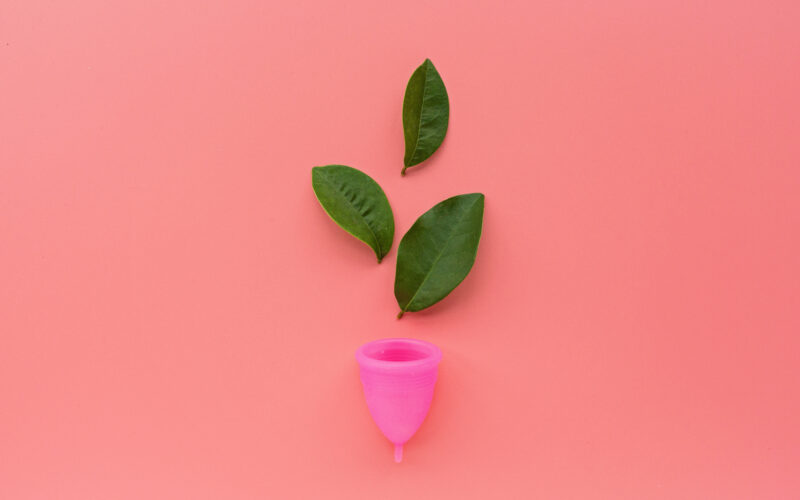When I was in college in Wyoming, I took a few courses in outdoor education, where I was taught how to conduct myself with minimal impact on the wild, untouched “backcountry” of Wyoming’s mountain ranges. Stories of what NOT to do abound in these types of classes, as most wilderness instructors with any level of experience have witnessed firsthand the detrimental effects of things like littering, feeding wildlife, and improper use of fires. One anecdote concerning waste disposal in particular has stuck with me over the years, and is the primary reason why I have turned to reusable, green period products instead of conventional, disposable ones.
What I learned in the backcountry
During a class on the proper disposal of human waste, our instructor informed us that unlike animal scat, which is the byproduct of many natural foods, human waste does not decompose easily due to the many preservatives and artificial ingredients that make up our diet–in other words, our poo is sticking around for many, many years! I was horrified. Not only did I resolve that day to dig decently deep holes for myself in the backcountry when the need arose (thus aiding the process of decomposition), but I also began to wonder–what else am I disposing of carelessly on a regular basis that would continue to be gross and contaminative long after I was gone? Since then I’ve recognized that feminine hygiene products, while managing an essential bodily function (for which I’m certainly grateful!), can generate a lot of waste–and I’ve resolved to “green” my period products as much as possible.
Just how “bad” are conventional period products for the environment?
For starters, the amount of menstrual product waste ending up in landfills is significant. According to some, the average woman uses 350 packs of plastic sanitary pads in her lifetime. However, looking at my own body’s cycle, the average may be much higher. I started having my period around 12, which is typical, and if I experience menopause around 52, which is also typical, and I use one pack of pads per cycle, then the total number of packs that I might expect to use during my lifetime could be closer to 480!
Naturally, that number would vary depending on the number and type of pads included in a pack (and it can often feel like there are too many options to choose from!), plus “breaks” from having a period during pregnancy and postpartum, but the thought of that many pads being thrown away is a bit staggering.
Any woman knows, too, that a good pad is one made to last–i.e., a pad that is not going to disintegrate easily, or it wouldn’t be doing its job! One can only imagine, though, just how long our modern menstrual pads stick around in landfills, given that they are mostly made up of plastic and other non-biodegradable materials called super absorbent polymers (SAPs).
Tampons, according to some, can take five to six months to decompose, but only so long as they are made of 100% cotton and are added to an already existing compost pile.I don’t know about you, but I do not usually have ready access to a compost pile when I am out and about during my period! In most circumstances, regular tampons, like pads, may take as long as hundreds of years to break down. (Tampon use is also associated with toxic shock syndrome, or TSS, particularly prolonged use. TSS is rare but life-threatening, and one has to wonder whether the risk of harm is worth using them, especially when there are other options available–which we’ll discuss, next!).
“Green” your period with these menstrual product alternatives
The good news is that there are many eco-friendly alternatives to using the standard menstrual products on the market! While initially there may be a bit of a budget stretch to make the change, as many of the alternatives are admittedly expensive up front, the payoff of less trash and healthier bodies may just be worth it. (I haven’t done the math, but it’s also quite possible that you’ll save money in the long run, anyway!)
Reusable pads
First, there are reusable pads. As a parent who has been using cloth diapers for both my kids, this idea isn’t shocking to me, but it may be a bit of an adjustment for some.
A reusable pad is a small (often prettily colored) piece of cloth that snaps around your underwear. It comes in various sizes, and some also have optional liners included for increased absorption. You treat it just like a regular pad, only you have a bit more laundry to do at the end of the day. A downside for some might be that you need to carry them around with you when you are on the go, rather than just disposing of them in the trash, but you can also purchase a designated bag to contain the used ones.
Now, if you are a crafty person, it seems to me like you could easily sew some of your own with a soft, thick material like flannel, especially since the reusable pads seem to run a bit expensive. I’m working on making a similar switch to reusable wipes for our kids, but it is definitely a time-consuming project! However, if you have the time and the determination to DIY your period options, it may be worthwhile both in terms of money and in terms of menstrual health. Also, some companies, like Glad Rags, donate to organizations whose values don’t align with mine, so attempting to make my own (or supporting a small business instead) is a win-win for me.
Menstrual cups
Next, there are menstrual cups. I found these to be a bit confusing at first, but they are a lot like using tampons once you get the hang of them. A menstrual cup is a “medical-grade” silicone cone that is inserted and then opened to catch the blood flow at the cervix. It also comes in various sizes, and some even have sizes for women who have given birth vaginally and women who haven’t.
Menstrual cup pros
The benefits are obvious: the cup is able to be worn without removal for up to 8 hours, meaning that instead of changing your pad or tampon every couple of hours (or fewer, if you have a heavy period), you only have to empty it out about two to three times per day. It requires cleaning in between wears, and a more thorough cleaning occasionally, but no other product is needed for your period. Potentially, you could use just one single cup for a few years!
Menstrual cup cons
On the flip side, menstrual cups may not be easily disposed of, although medical-grade silicon is recyclable (you just have to find out where you can do so). Also, if you’ve had TSS before, neither menstrual cup nor tampon use is recommended. Furthermore, while medical-grade silicone is considered safe to use, being employed in baby bottle nipples, catheter components, and scuba mouthpieces, to name a few, one has to wonder if there is any sort of negative side effect from silicone being worn inside a woman’s body for hours at a time (in an environment that is full of capillaries, which quickly absorb things into the bloodstream). I am not a tampon user, generally, so menstrual cups are a bit off-putting to me because I don’t really like the idea of sticking something up there and letting it hang out all day! But they work well for some, and I have heard many women swear by them.
Period underwear
And finally, there is the option to wear period panties. Period underwear looks just like regular women’s underwear, only with a thicker layer of material along the center to absorb blood flow. They come in a variety of styles, colors, and sizes, and are often made of breathable material that is designed to wick moisture away. Some, like Thinx, have options designed for heavy flow and for light flow. Others come in pretty colors and discreet designs that stay invisible under clothing while still providing a high level of protection.And, you don’t have to worry about anything slipping out of place!
Based on personal experience: would recommend period underwear
I made the switch to period panties when I had my second baby, because I didn’t want to have to purchase so many pads to accommodate for the longer blood flow (aka lochia) during postpartum recovery. So far, I have been very pleased with the switch, although it does take some time figuring out how often to change underwear to accommodate your unique cycle. For example, I realized pretty quickly that I needed to have two pairs ready for my heavy days, meaning that I will need to purchase more at some point so that I am not doing laundry so often during my period. This can be a drawback for some, especially since most period underwear is rather expensive. However, if seen as an investment, these panties should last for years and hopefully save money (and space in the landfill!) in the long term.
Caring for our bodies while we care for our planet
Ultimately, women ought to do not only what works best with their lifestyle, but also what is best for their bodies. Disposable menstrual products are a relatively new invention, so we have limited knowledge of their long-term effects on our bodies and our environment. However, we can weigh the possible environmental risks against the many known benefits of switching to reusable ones. Fortunately, multiple reusable options are available to us. Let’s be thoughtful both about what goes into our bodies as well as what comes out of them.
Additional Reading:
Having “green sex” might be the best thing you can do for the environment
Is FAM really natural birth control?
Can you really use breastfeeding as natural birth control?
Why the copper IUD is not the natural birth control you’ve been looking for
How my awful experience with the copper IUD led me to truly natural birth control
What does it cost to learn natural birth control, FAM, or NFP?











